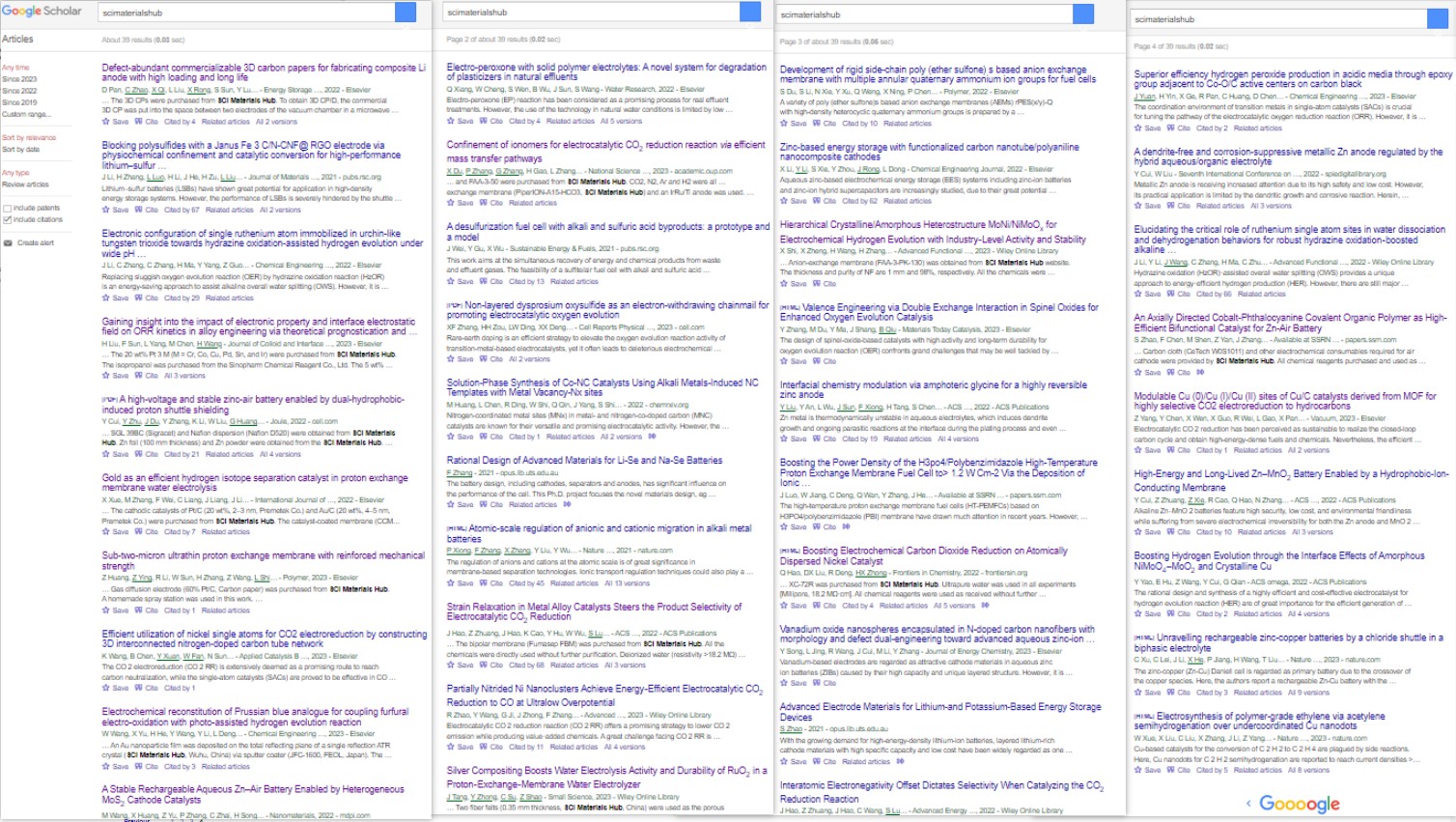
E272c Pt/HSC - Carbon Cloth (W1S1011) Electrode for HT-PEMFC is a high-performance electrode specifically designed for high-temperature proton exchange membrane fuel cells (HT-PEMFC). It utilizes carbon cloth with a hydrophobic microporous layer to ensure excellent water management and gas diffusion capabilities, making it suitable for high-temperature operating environments.
Carbon Cloth Substrate:
Structure: The carbon cloth features excellent conductivity and high-temperature resistance, with a hydrophobic microporous layer covering its surface to ensure good gas diffusion and moisture management in high-temperature and high-humidity environments. The total thickness of the carbon cloth electrode is approximately 0.45 mm, ensuring that the electrode maintains a lightweight design while providing high mechanical strength.
Hydrophobic Microporous Layer: This layer prevents excessive water accumulation while ensuring good diffusion of oxygen and hydrogen at the electrode surface, contributing to stable operation of the fuel cell, particularly in high-temperature conditions.
Platinum-Carbon Catalyst Layer:
Platinum Loading: The catalytic layer of the electrode contains highly dispersed platinum nanoparticles, which are loaded onto high surface area carbon materials to ensure sufficient reaction activity and catalytic efficiency.
High Surface Area Carbon: The high surface area carbon provides abundant surface sites for platinum, increasing the utilization of platinum and thus enhancing the overall performance of the fuel cell.
PTFE Binder:
Using PTFE as Binder: The electrode uses polytetrafluoroethylene (PTFE) as the binder. Due to its excellent chemical stability and hydrophobicity, PTFE is particularly suitable for use in high-temperature proton exchange membrane fuel cells. It not only enhances the mechanical strength of the electrode but also improves corrosion resistance and high-temperature stability, ensuring stable performance during high-temperature operation (typically above 120°C).
High-Temperature Stability: Given that HT-PEMFC operates at elevated temperatures (usually between 120°C and 200°C), PTFE prevents damage to the electrode structure at high temperatures and enhances the durability of the fuel cell.
Water Management: The hydrophobicity of PTFE helps the electrode maintain an appropriate moisture content, avoiding performance degradation due to flooding while ensuring that the proton exchange membrane remains adequately hydrated.
Main Application Areas:
High-Temperature Proton Exchange Membrane Fuel Cells (HT-PEMFC): The DiffuCarb™ E272c Platinum/High Surface Area Carbon-Carbon Cloth Electrode is particularly suitable for HT-PEMFC systems, which typically operate at higher temperatures, offering better pollution resistance and higher thermal efficiency.
Stable Water Management and Gas Diffusion: This electrode is specifically optimized for water management and gas diffusion at high temperatures, ensuring long-term stable operation of the fuel cell and increasing power density.
The DiffuCarb™ E272c Platinum/High Surface Area Carbon-Carbon Cloth Electrode, with its carbon cloth substrate featuring a hydrophobic microporous layer and PTFE binder, offers excellent water management, high-temperature stability, and electrochemical performance, making it especially suitable for long-term efficient operation in high-temperature proton exchange membrane fuel cells.
For international orders, please ask us for quotes via
Email: contact@scimaterials.cn
Tel: +86 130-0303-8751 / +86 156-0553-2352
Wechat: SCI-Materials-Hub
Clik here to put quick orders on our Alibaba / Amazon / ebay store.
DiffuCarb™ E272c Pt/HSC - Carbon Cloth (W1S1011) Electrode for HT-PEMFC | ||||
Electrode Type | Carbon Cloth and Thickness | Catalyst Loading | Catalyst | Retail Price (USD$) |
E272c 0.03 mg/cm² 20% Pt/HSC - Carbon Cloth Electrode (W1S1011) for HT-PEMFC | W1S1011, 0.41mm | 0.03 mg/cm² Pt | Fueiceel® 20% Pt(2-2.5nm)/High Surface Area Carbon | 5x5cm², $90;10x10cm², $256 15x15cm², $516;20x20cm², $596 |
E272c 0.2 mg/cm² 20% Pt/HSC - Carbon Cloth Electrode (W1S1011) for HT-PEMFC | W1S1011, 0.41mm | 0.2 mg/cm² Pt | Fueiceel® 20% Pt(2-2.5nm)/High Surface Area Carbon | 5x5cm², $100;10x10cm², $300 15x15cm², $600;20x20cm², $796 |
E272c 0.3 mg/cm² 30% Pt/HSC - Carbon Cloth Electrode (W1S1011) for HT-PEMFC | W1S1011, 0.41mm | 0.3 mg/cm² Pt | Fueiceel® 30% Pt(2-2.5nm)/High Surface Area Carbon | 5x5cm², $110;10x10cm², $330 15x15cm², $660;20x20cm², $916 |
E272c 0.3 mg/cm² 40% Pt/HSC - Carbon Cloth Electrode (W1S1011) for HT-PEMFC | W1S1011, 0.41mm | 0.3 mg/cm² Pt | Fueiceel® 40% Pt(2-2.5nm)/High Surface Area Carbon | 5x5cm², $110;10x10cm², $330 15x15cm², $660;20x20cm², $916 |
E272c 0.4 mg/cm² 40% Pt/HSC - Carbon Cloth Electrode (W1S1011) for HT-PEMFC | W1S1011, 0.41mm | 0.4 mg/cm² Pt | Fueiceel® 40% Pt(2-2.5nm)/High Surface Area Carbon | 5x5cm², $120;10x10cm², $360 15x15cm², $720;20x20cm², $976 |
E272c 0.4 mg/cm² 50% Pt/HSC - Carbon Cloth Electrode (W1S1011) for HT-PEMFC | W1S1011, 0.41mm | 0.4 mg/cm² Pt | Fueiceel® 50% Pt(2-2.5nm)/High Surface Area Carbon | 5x5cm², $120;10x10cm², $360 15x15cm², $720;20x20cm², $976 |
E272c 0.5 mg/cm² 50% Pt/HSC - Carbon Cloth Electrode (W1S1011) for HT-PEMFC | W1S1011, 0.41mm | 0.5 mg/cm² Pt | Fueiceel® 50% Pt(2-2.5nm)/High Surface Area Carbon | 5x5cm², $130;10x10cm², $390 15x15cm², $796;20x20cm², $1096 |
E272c 0.5 mg/cm² 60% Pt/HSC - Carbon Cloth Electrode (W1S1011) for HT-PEMFC | W1S1011, 0.41mm | 0.5 mg/cm² Pt | Fueiceel® 60% Pt(2.5-3.0nm)/High Surface Area Carbon | 5x5cm², $130;10x10cm², $390 15x15cm², $796;20x20cm², $1096 |
E272c 1 mg/cm² 60% Pt/HSC - Carbon Cloth Electrode (W1S1011) for HT-PEMFC | W1S1011, 0.41mm | 1 mg/cm² Pt | Fueiceel® 60% Pt(2.5-3.0nm)/High Surface Area Carbon | 5x5cm², $140;10x10cm², $420 15x15cm², $840;20x20cm², $1196 |
E272c 1 mg/cm² 70% Pt/HSC - Carbon Cloth Electrode (W1S1011) for HT-PEMFC | W1S1011, 0.41mm | 1 mg/cm² Pt | Fueiceel® 70% Pt(3.0nm)/High Surface Area Carbon | 5x5cm², $140;10x10cm², $420 15x15cm², $840;20x20cm², $1196 |
| SCI Materials Hub is Committed to Offerig The Best Price & Customer Services! | ||||
Customizable information based on user requirements:
**Worldwide shipping via DHL, SF-Express & other requested carriers.
***Payments via Bank Transfer, Paypal, Credit card (via Taobao), Alipay, Wechat-pay are accepted.
Partial references citing our materials (from Google Scholar)

Carbon Dioxide Reduction
1. ACS Nano Strain Relaxation in Metal Alloy Catalysts Steers the Product Selectivity of Electrocatalytic CO2 Reduction
The bipolar membrane (Fumasep FBM) in this paper was purchased from SCI Materials Hub, which was used in rechargeable Zn-CO2 battery tests. The authors reported a strain relaxation strategy to determine lattice strains in bimetal MNi alloys (M = Pd, Ag, and Au) and realized an outstanding CO2-to-CO Faradaic efficiency of 96.6% with outstanding activity and durability toward a Zn-CO2 battery.
2. Front. Chem. Boosting Electrochemical Carbon Dioxide Reduction on Atomically Dispersed Nickel Catalyst
In this paper, Vulcan XC-72R was purchased from SCI Materials Hub. Vulcan XC 72R carbon is the most common catalyst support used in the anode and cathode electrodes of Polymer Electrolyte Membrane Fuel Cells (PEMFC), Direct Methanol Fuel Cells (DMFC), Alkaline Fuel Cells (AFC), Microbial Fuel Cells (MFC), Phosphoric Acid Fuel Cells (PAFC), and many more!
3. Adv. Mater. Partially Nitrided Ni Nanoclusters Achieve Energy-Efficient Electrocatalytic CO2 Reduction to CO at Ultralow Overpotential
An AEM membrane (Sustainion X37-50 Grade RT, purchased from SCI Materials Hub) was activated in 1 M KOH for 24 h, washed with ultra-purity water prior to use.
4. Adv. Funct. Mater. Nanoconfined Molecular Catalysts in Integrated Gas Diffusion Electrodes for High-Current-Density CO2 Electroreduction
In this paper (Supporting Information), an anion exchanged membrane (Fumasep FAB-PK-130 obtained from SCI Materials Hub (www.scimaterials.cn)) was used to separate the catholyte and anolyte chambers.
SCI Materials Hub: we also recommend our Fumasep FAB-PK-75 for the use in a flow cell.
5. Appl. Catal. B Efficient utilization of nickel single atoms for CO2 electroreduction by constructing 3D interconnected nitrogen-doped carbon tube network
In this paper, the Nafion 117 membrane was obtained from SCI Materials Hub.
In this paper, Proton exchange membrane (Nafion 117), Nafion D520, and Toray 060 carbon paper were purchased from SCI Materials Hub.
7. National Science Review Confinement of ionomer for electrocatalytic CO2 reduction reaction via efficient mass transfer pathways
An anion exchange membrane (PiperION-A15-HCO3) was obtained from SCI Materials Hub.
8. Catalysis Communications Facilitating CO2 electroreduction to C2H4 through facile regulating {100} & {111} grain boundary of Cu2O
Carbon paper (TGPH060), membrane solution (Nafion D520), and ionic membrane (Nafion N117) were obtained from Wuhu Eryi Material Technology Co., Ltd (a company under SCI Materials Hub).
Batteries
1. J. Mater. Chem. A Blocking polysulfides with a Janus Fe3C/N-CNF@RGO electrode via physiochemical confinement and catalytic conversion for high-performance lithium–sulfur batteries
Graphene oxide (GO) in this paper was obtained from SCI Materials Hub. The authors introduced a Janus Fe3C/N-CNF@RGO electrode consisting of 1D Fe3C decorated N-doped carbon nanofibers (Fe3C/N-CNFs) side and 2D reduced graphene oxide (RGO) side as the free-standing carrier of Li2S6 catholyte to improve the overall electrochemical performance of Li-S batteries.
This paper used more than 10 kinds of materials from SCI Materials Hub and the authors gave detailed properity comparsion.
The commercial IEMs of Fumasep FAB-PK-130 and Nafion N117 were obtained from SCI Materials Hub.
Gas diffusion layers of GDL340 (CeTech) and SGL39BC (Sigracet) and Nafion dispersion (Nafion D520) were obtained from SCI Materials Hub.
Zn foil (100 mm thickness) and Zn powder were obtained from the SCI Materials Hub.
Commercial 20% Pt/C, 40% Pt/C and IrO2 catalysts were also obtained from SCI Materials Hub.
3. Journal of Energy Chemistry Vanadium oxide nanospheres encapsulated in N-doped carbon nanofibers with morphology and defect dual-engineering toward advanced aqueous zinc-ion batteries
In this paper, carbon cloth (W0S1011) was obtained from SCI Materials Hub. The flexible carbon cloth matrix guaranteed the stabilization of the electrode and improved the conductivity of the cathode.
4. Energy Storage Materials Defect-abundant commercializable 3D carbon papers for fabricating composite Li anode with high loading and long life
The 3D carbon paper (TGPH060 raw paper) were purchased from SCI Materials Hub.
5. Nanomaterials A Stable Rechargeable Aqueous Zn–Air Battery Enabled by Heterogeneous MoS2 Cathode Catalysts
Nafion D520 (5 wt%), and carbon paper (GDL340) were received from SCI-Materials-Hub.
Carbon cloth (W0S1011) and other electrochemical consumables required for air cathode were provided by SCI Materials Hub.
Oxygen Reduction Reaction
1. J. Chem. Eng. Superior Efficiency Hydrogen Peroxide Production in Acidic Media through Epoxy Group Adjacent to Co-O/C Active Centers on Carbon Black
In this paper, Vulcan XC 72 carbon black, ion membrane (Nafion N115, 127 μL), Nafion solution (D520, 5 wt%), and carbon paper (AvCarb GDS 2230 and Spectracarb 2050A-1050) were purchased from SCI Materials Hub.
2. Journal of Colloid and Interface Science Gaining insight into the impact of electronic property and interface electrostatic field on ORR kinetics in alloy engineering via theoretical prognostication and experimental validation
The 20 wt% Pt3M (M = Cr, Co, Cu, Pd, Sn, and Ir) were purchased from SCI Materials Hub. This work places emphasis on the kinetics of the ORR concerning Pt3M (M = Cr, Co, Cu, Pd, Sn, and Ir) catalysts, and integrates theoretical prognostication and experimental validation to illuminate the fundamental principles of alloy engineering.
Water Electrolysis
1. International Journal of Hydrogen Energy Gold as an efficient hydrogen isotope separation catalyst in proton exchange membrane water electrolysis
The cathodic catalysts of Pt/C (20 wt%, 2–3 nm) and Au/C (20 wt%, 4–5 nm) were purchased from SCI Materials Hub.
2. Small Science Silver Compositing Boosts Water Electrolysis Activity and Durability of RuO2 in a Proton-Exchange-Membrane Water Electrolyzer
Two fiber felts (0.35 mm thickness, SCI Materials Hub) were used as the porous transport layers at both the cathode and the anode.
3. Advanced Functional Materials Hierarchical Crystalline/Amorphous Heterostructure MoNi/NiMoOx for Electrochemical Hydrogen Evolution with Industry-Level Activity and Stability
Anion-exchange membrane (FAA-3-PK-130) was obtained from SCI Materials Hub website.
Fuel Cells
1. Polymer Sub-two-micron ultrathin proton exchange membrane with reinforced mechanical strength
Gas diffusion electrode (60% Pt/C, Carbon paper) was purchased from SCI Materials Hub.
Characterization
1. Chemical Engineering Journal Electrochemical reconstitution of Prussian blue analogue for coupling furfural electro-oxidation with photo-assisted hydrogen evolution reaction
An Au nanoparticle film was deposited on the total reflecting plane of a single reflection ATR crystal (SCI Materials Hub, Wuhu, China) via sputter coater.

|
We Provide A Broad Range of Materials, Instruments & Solutions in Advanced Science and Technologies | About Us |



